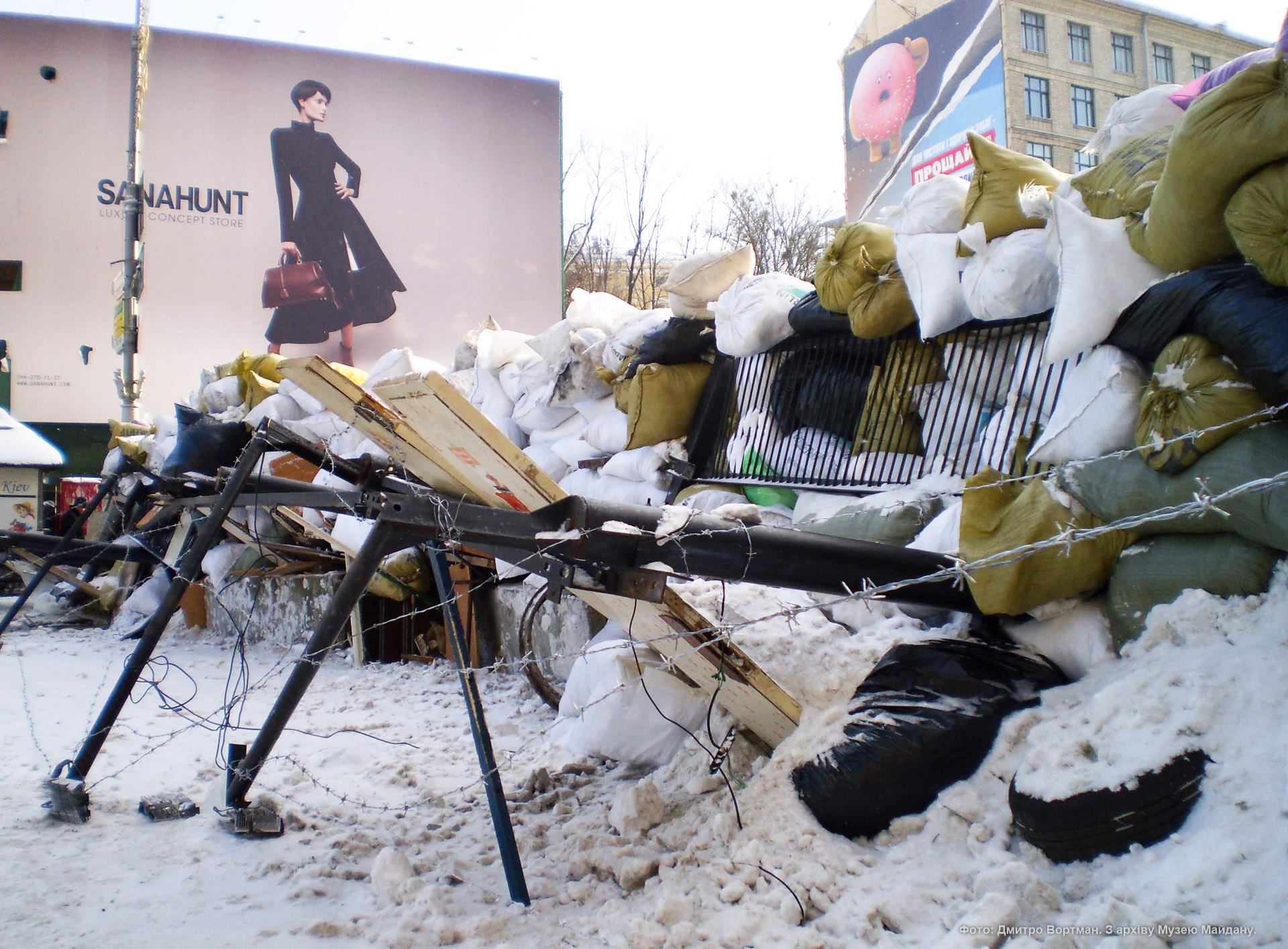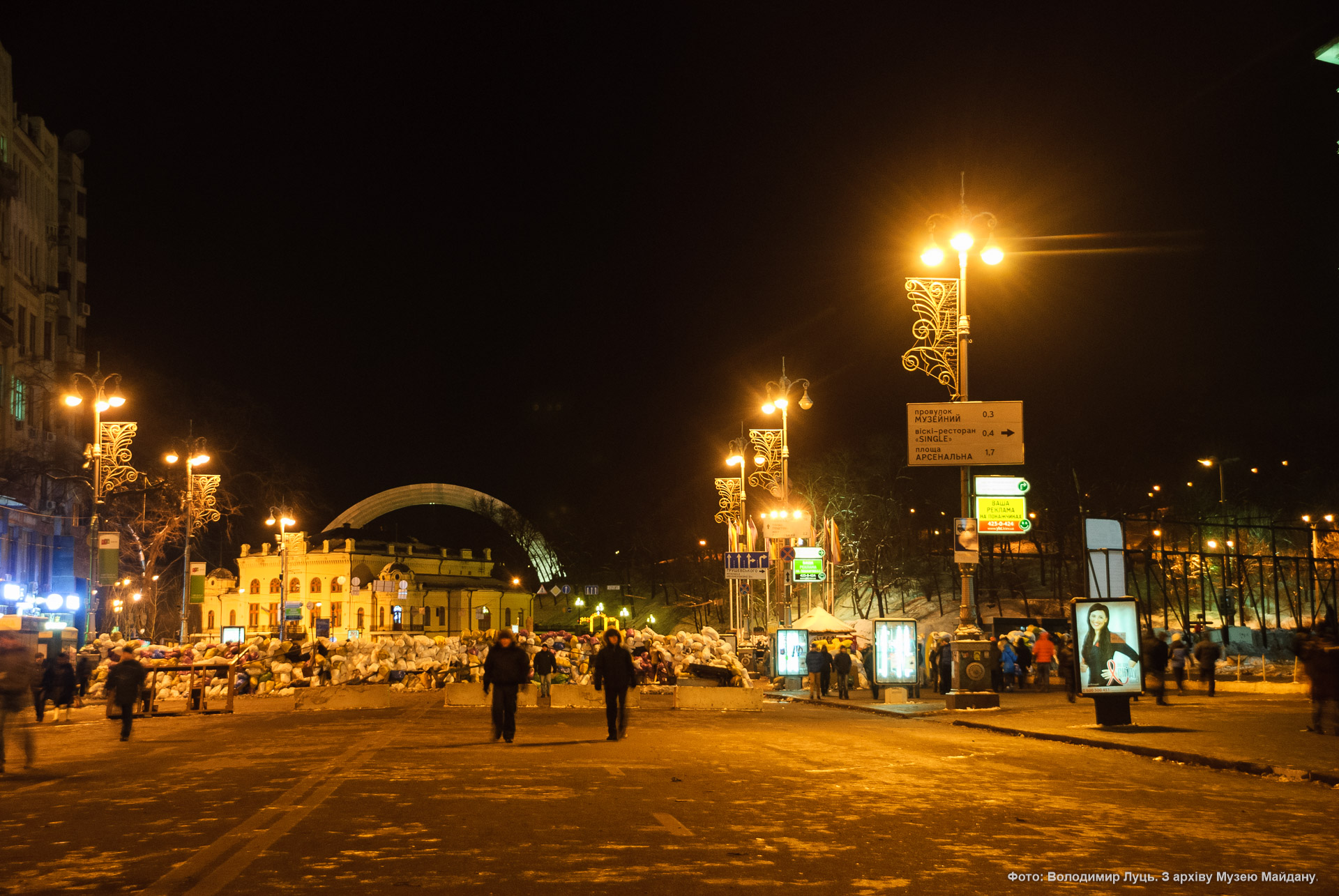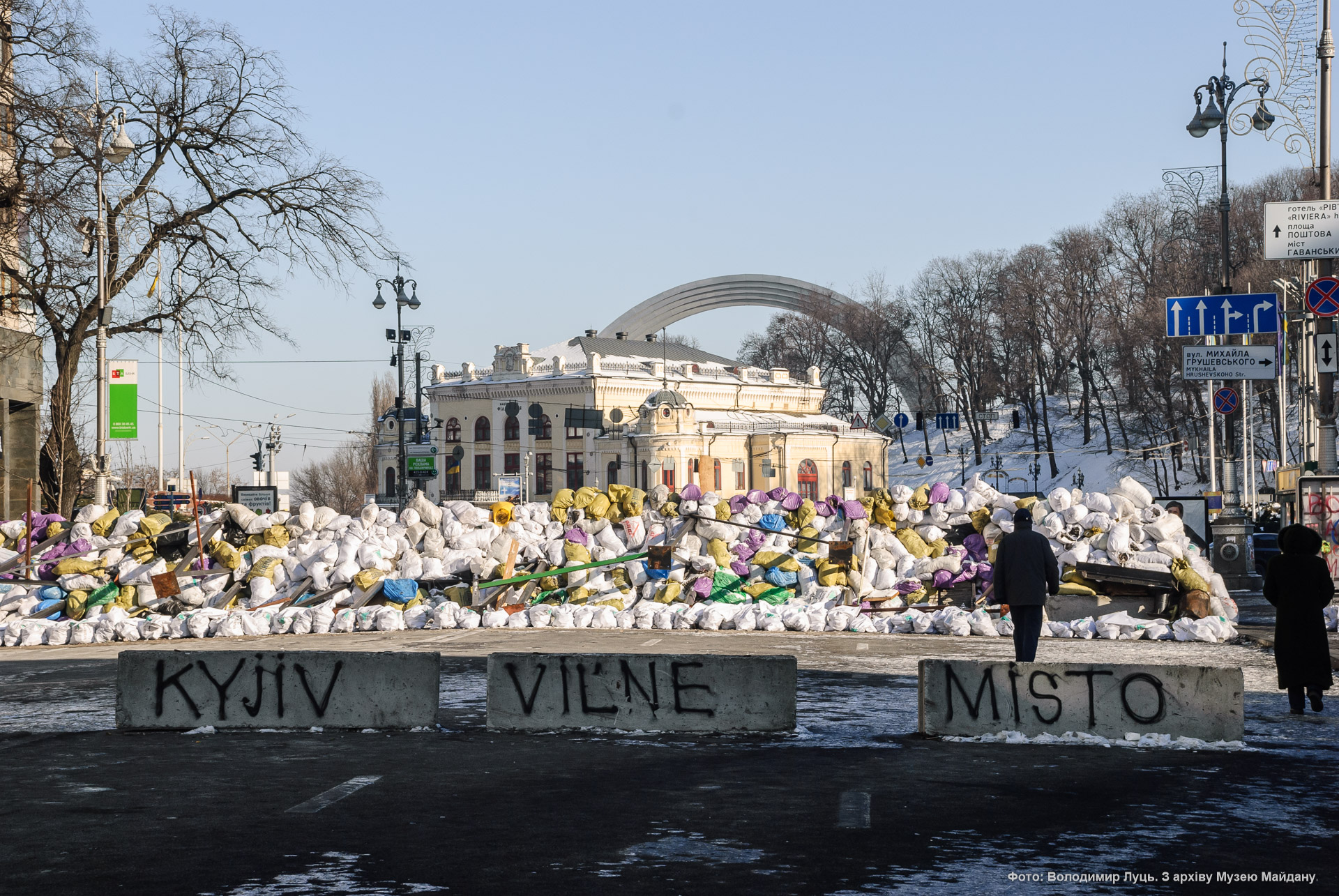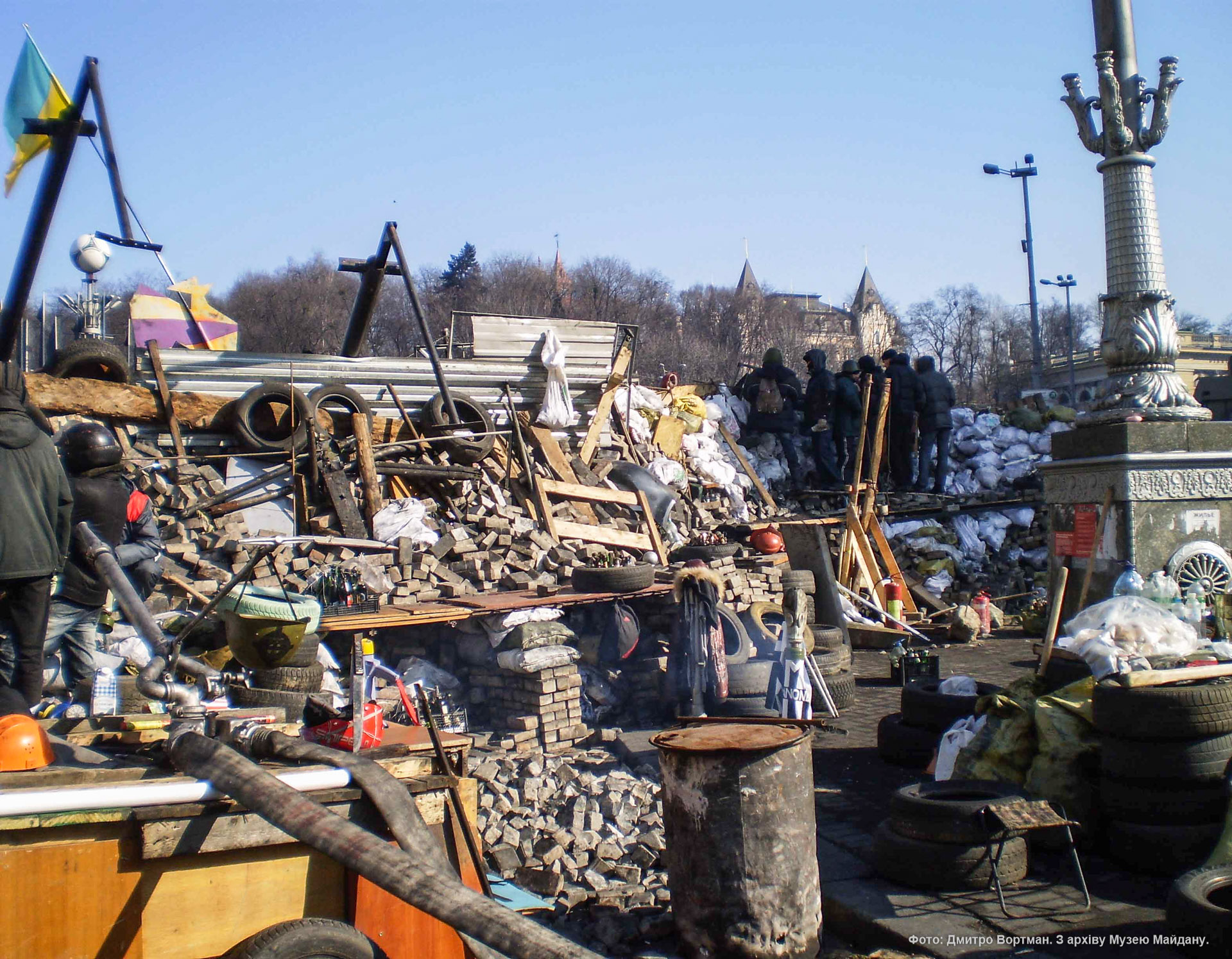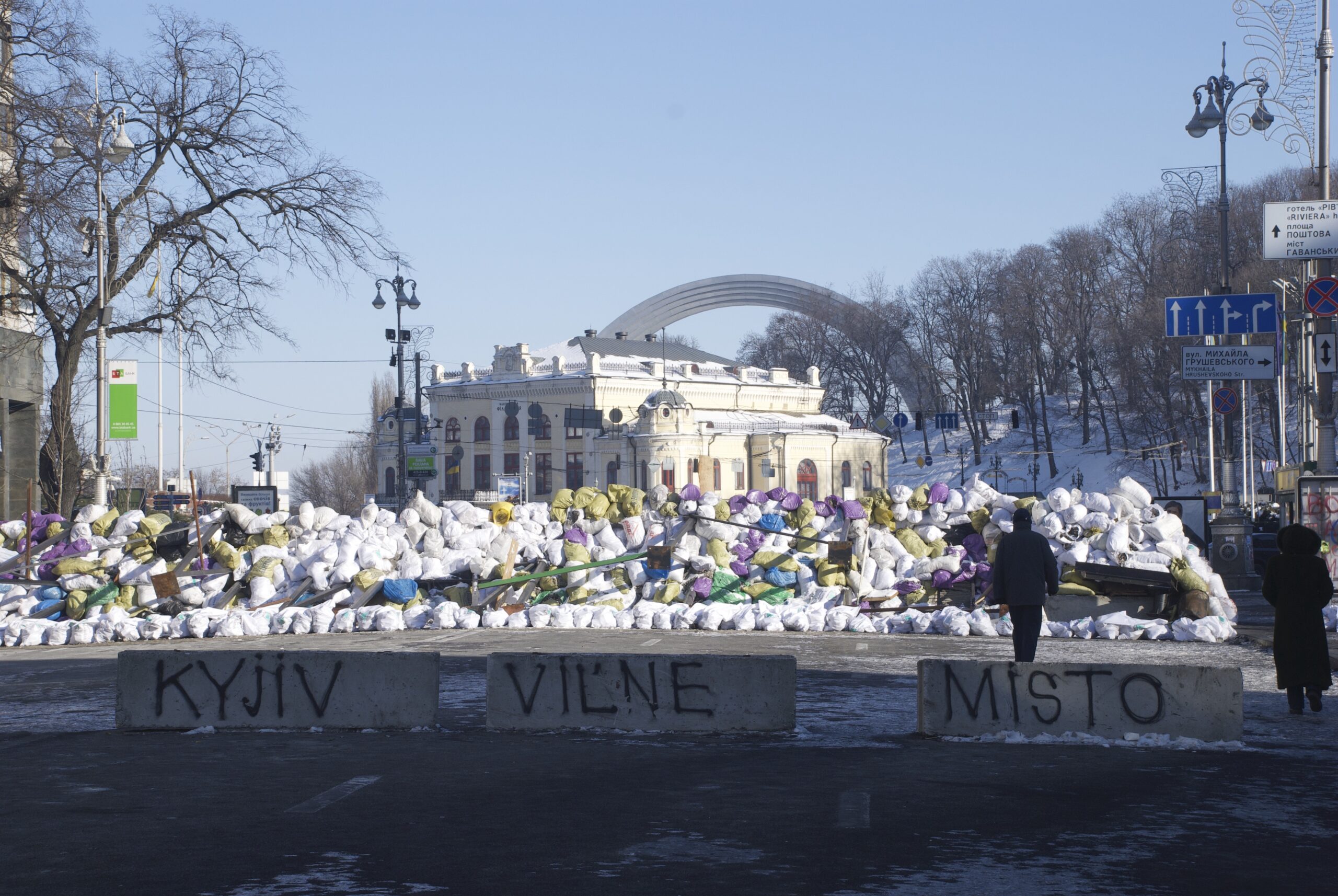


Barricade near the European Square3 Khreshchatyk
From December 1, 2013, when the protesters’ Tent City unfolded on Independence Square and until the start of violent confrontations on Hrushevskyi Street, European Square was a buffer between the territory controlled by the security forces and Maidan. The riot police checkpoint was at Hrushevskyi street, and the nearest Maidan barricade, marking the border of a Tent City, was near the Trade Union Building (Barricade #2).
However, the situation dramatically cnahged after the adoption of the dictatorial laws by Verkhovna Rada (Ukrainian parliament). The clashes began on January 19, 2014, on Hrushevskyi Street and escalated into constant violent confrontations. On January 22, the first protesters were killed. The riot police forces launched an offensive, which protesters repelled.
Several hundred internal troops occupied the building of the Ukrainian House cultural centre. From there, they planned to attack the Maidan protesters holding the line on Hrushevskyi Street from the rear, cutting them off from the Maidan. In response, on the night of January 26, the Ukrainian House was blocked by protesters, and security forces were forced to leave. The Maidan activists set up a hospital, a kitchen, the Open University stage of Maidan, the Maidan Library, the Student Assembly, the Automaidan headquarters, the Art Hundred, the Maidan press center, and stationed the Self-Defense units from the Ukrainian House.
There was a need to put up an additional line of defense on the outskirts of Maidan, and the leadership of the Maidan Self-Defense decided to build a barricade between the Dnipro Hotel and the Khreshchatyk Bank building. Unlike other Maidan barricades, this one was quite strong from the beginning. People brought in massive metal pipes and concrete blocks and piled up snow-packed bags to form a protection wall. They also reinforced the structure with metal fences, wooden boards, and barbed wire. From the side of Independence Square, they blocked the passage with massive concrete blocks. A passage was left closer to the even side of the street.
The barricade served its purpose until the evening of February 18, 2014. Riot police special forces destroyed this fortification during the attacks of the Maidan.
Restorations began on February 20, with paving stones, tires, barrels, boards, pallets, etc. However, by this time, the regime had already begun to crumble, and Maidan had won without knowing it. The barricade remained in this form on the street until mid-April 2014.
How was it...
A memory from a participant of the events:
“That day [January 22] was a turning point. It was either we or they. Either we overthrow Yanukovych’s regime, or there would be a major violent clash that would end in great bloodshed. For us, things couldn’t go any other way from that point on.”
Valerii Pekar, one of the coordinators of the initiative “Civic Operational Headquarters”
“At 5.30 am, Serhii Nihoyan was brought to the medical center [on Hrushevskyi Street], already dead. His face was white, his eyes were glassy, and I immediately realized that we could not help him. His wounds were incompatible with life: a bullet wound near the carotid artery, another wound in the chest, and internal hemorrhage. So when a priest came up to us and asked if he could help, I did not hesitate to answer: “Yes, you can…”
Sign up for a tour
Сontacts
National Memorial Complex of the Heavenly Hundred Heroes - Museum of the Revolution of Dignity 9 Lavrska Street, building 20, Kyiv, 01015
+38 044 229 40 13 maidanmuseum@gmail.comOur socials:
«Terra Dignitas AR»
Є першою спробою «оживити» київський Майдан 2013–2014 років та відтворити образ і дух історичних подій Революції Гідності засобами доповненої реальності.
Нам важлива Ваша думка. Ми потребуємо чути від вас і добре слово, і конструктивні зауваги. Це сприяє вдосконаленню нашої роботи.

